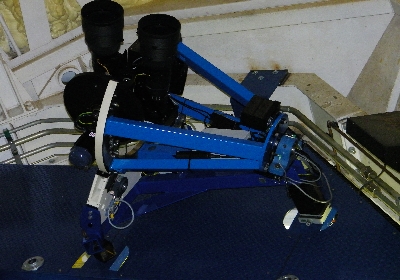
Assassin Picture of the Week
 | APOW Assassin Picture of the Week |
Dramatic AGN Outburst in NGC 2617
On 2013 Apr. 10.27, ASAS-SN was triggered by a ~10% relative flux increase from the inner regions of NGC 2617. Follow-up spectroscopy found that NGC 2617, previously classified as a Seyfert 1.8 galaxy, had also changed its spectral type to become a Seyfert 1 with broad optical emission lines and a continuum blue bump. We then began a ~70 day photometric and spectroscopic monitoring campaign from the NIR - X-rays, observing NGC 2617 through a dramatic outburst in which its X-ray flux increased by over an order of magnitude followed by an increase in its optical/ultraviolet (UV) continuum flux by almost an order of magnitude. Although these spectral changes could have occurred at any time in the intervening decade, it seems most likely that the change in Seyfert type was associated with the strong outburst given the rarity of both ``changing-look'' AGN and powerful X-ray flares.
In this figure we show the scaled NIR-UV photometric observations of NGC 2617 spanning ~60 days from 2013 Apr. 24 through June 20. Similar filters have been scaled and combined into a common light curve. There is a clear lag between the X-ray and UV-NIR variability. We also see that the NIR is more heavily temporally smoothed than the UV. Since the sequence of variability seems to lead with the X-rays and is followed by redward bands, the natural explanation of the observations seems to be variability driven by X-ray irradiation of the AGN accretion disk, possibly due to coronal activity. A simple physical model using X-ray illumination to heat a thin disk is shown by the black lines. While not a perfect match, the general amplitudes, lags, and smoothness of the light curves as a function of wavelength are successfully reproduced. Finally, note how the relative strengths of the two peaks in the X-ray light curve change in the redward filters. This behavior is not captured in our our simple model with instantaneous reradiation.
A video by graduate student Ben Shappee describing this work can be found here. A video made by graduate student Tom Holoien of the Swift Space Telescope data obtained for NGC 2617 can be found here.
Back to ASAS-SN page.
See previous APOWs:
Two ASAS-SN Views of Orion Nebula
AAVSO Observations of Cataclysmic Variable ASASSN-13ck
Two ASAS-SN Supernovae in One Day!
Extreme M-dwarf Flare Observed by ASAS-SN;
Multiband photometric follow-up of ASASSN-13aw (SN 2013dr);
How
ASAS-SN Discovers Supernovae: Case of Supernova ASASSN-13bb;
NGC
2617: Dramatic Seyfert Type Change;
ASASSN-13/SN
2013da: Our First Supernova Three Weeks Later;
This homepage is maintained by Ben Shappee and Kris Stanek.
Updated Sun Oct 6 17:13:57 EDT 2013